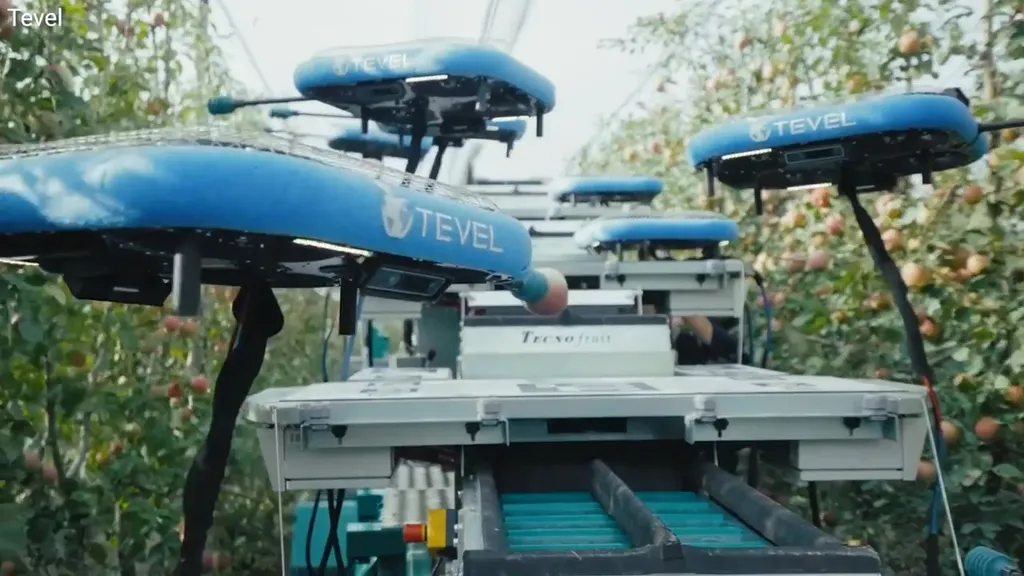In the heart of China’s bustling tech scene, researchers are making strides that could revolutionize the way we think about agricultural automation. Zhimin Mei, a leading figure from the School of Intelligent Manufacturing at Wuchang Institute of Technology in Wuhan, has recently published a groundbreaking study in the journal *Agriculture* (translated from Chinese as “Nongye”). The research introduces an advanced method for intelligent fruit localization and grasping, combining deep learning and 3D vision to enhance robotic harvesting efficiency.
Mei’s study focuses on a hybrid framework that integrates the YOLO VX deep learning model, 3D object recognition, and SLAM-based navigation. This innovative approach aims to streamline the process of picking ripe fruits in greenhouse environments, using servo-controlled robotic arms with flexible end-effectors. “Our goal was to create a system that not only identifies ripe fruits accurately but also navigates and picks them efficiently,” Mei explains. The framework consists of three main components: a fruit sample database, a 3D camera for real-time data acquisition, and a SLAM navigation module for precise targeting.
The fruit sample database contains varying maturity levels and morphological features, interfaced with an optimized YOLO VX model for target fruit identification. The 3D camera captures the spatial position and orientation data of the target fruit, which is then stored in the collaborative robot’s microcontroller. Finally, the SLAM navigation module guides the robotic arm to the designated picking location through unobstructed target positioning.
Mei’s team conducted comprehensive comparative experiments between the improved YOLO v12n model and earlier versions to validate its performance. The results were impressive. The optimized model demonstrated superior target fruit identification response times, as fast as 30.9 milliseconds, and significantly higher accuracy, reaching 91.14%. “This level of precision and speed is a game-changer for the agricultural industry,” Mei notes.
The implications of this research extend beyond the agricultural sector. The integration of deep learning and 3D vision in robotic systems could pave the way for more efficient and accurate automation in various industries, including energy. For instance, similar technologies could be adapted for inspecting and maintaining solar panels or wind turbines, ensuring optimal performance and reducing downtime.
As the world continues to grapple with labor shortages and the need for sustainable practices, Mei’s research offers a glimpse into a future where automation plays a pivotal role. “Our work is just the beginning,” Mei says. “We believe that the combination of deep learning and 3D vision will open up new possibilities for intelligent automation in agriculture and beyond.”
Published in *Agriculture*, this study not only highlights the potential of advanced technologies in transforming traditional practices but also underscores the importance of interdisciplinary research. As we look to the future, the fusion of artificial intelligence and robotics holds the key to unlocking new levels of efficiency and productivity, shaping the way we approach agriculture and other industries.

